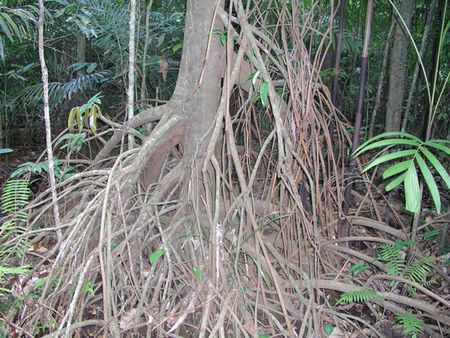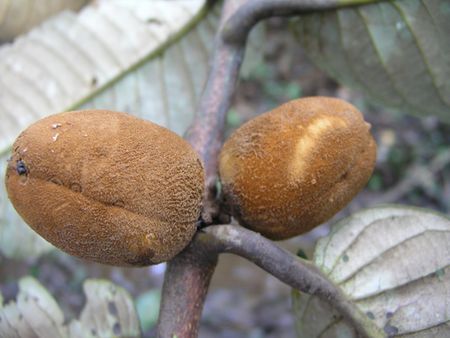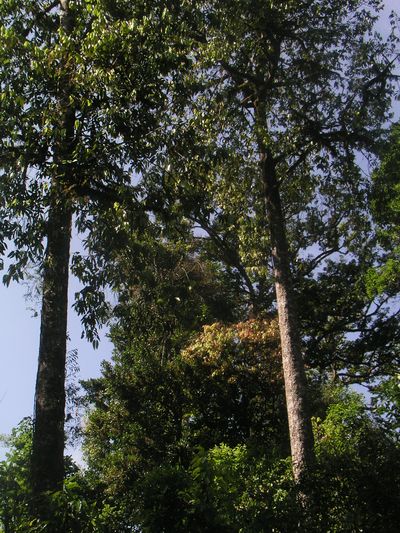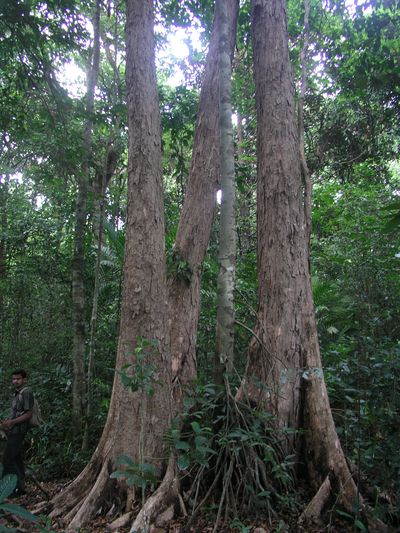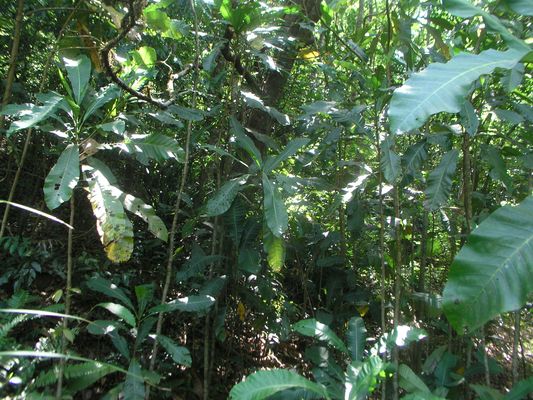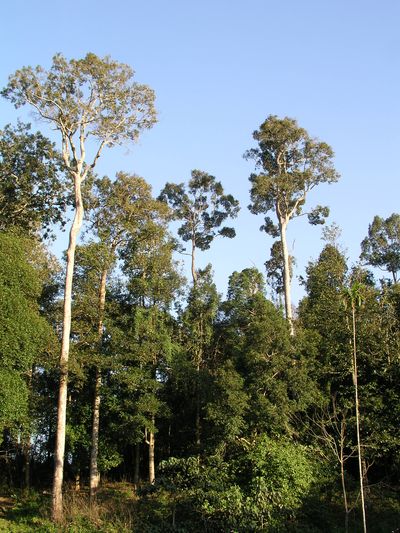Chandran MDS1, Rao GR2, Gururaja KV3, Ramachandra TV4,* Energy and Wetlands Research Group, Centre for Ecological Sciences, Indian Institute of Science, Bangalore 560 012, India E mail: 1mds@ces.iisc.ac.in, 2grrao@ces.iisc.ac.in, 3gururaj@ces.iisc.ac.in, 4tvr@ces.iisc.ac.in |
|
RESULTS AND DISCUSSION Characterization of relic forest Observations on forest structure and composition and nature of soil surface, in combination with forest history are helpful in distinguishing late successional secondary forests from relics of primary forests. In the western Uttara Kannada district, annual rainfall though high (>3000 mm), is seasonal and confined to about six months, which makes the evergreen forests here more susceptible to disturbances than southern forests with shorter dry period (Pascal, 1988). The entire region was widely affected by slash and burn cultivation cycles (Chandran 1998). More changes happened later from commercial forestry and developmental pressures. Long fallows after shifting cultivation, however, favoured return of the forest with most of the original tree species, except some relics. Among the primeval forest patches spared to some extent from alterations are many sacred groves and Myristica swamps (Fig. 6), which might also be part of sacred groves (Nair et al. 2007). These swamps, their substratum covered in entanglement of roots shaped like loops, knobs, serpents, flying buttresses, etc. support their primal nature. Dominant among the swamp trees are some species of the archaic family Myristicaceae. Their relatively large, recalcitrant seeds are suitable for swampy conditions and support their lineage from more equatorial aseasonal forests. Favourable hydrology of the swamps permitted the survival of relic species in higher latitudes with pronounced climatic seasonality (Chandran and Mesta 2001). The swamp exclusive Myristica magnifica (Fig. 7)and Gymnacranthera canarica (Fig. 8), Syzygium travancoricum (Fig. 9), Madhuca bourdillonii and the newly discovered Semecarpus kathalekanensis (Fig. 10), and others like Palaquium ellipticum, Mesua ferrea and Vateria indica may be considered among the relic trees of Uttara Kannada (Table 2).
Fig. 10 Semecarpus kathalekanensis saplings.
The Western Ghats exhibit a progressive decline in tree endemics from southern to the north, increasing dry period northwards being the principal decisive factor. Of the 318 tree species considered endemic, 85% occur in lat. 8-10° N which receive maximum of 8-10 months of rainfall. Lat 10-12° has 71% endemics, 43% in 12-14°, 22% in 14-16°, 17% in 16-18° and only 9% tree endemics north of 18°, with only 3-4 rainy months. In higher latitudes, more sensitive, hygrophilous species persist only in favourable pockets. Such relatively intact fragments of ancient vegetation, standing in isolation or amidst secondary forests, with one or more relic tree species, which are otherwise in their home range in wetter southern forests, may be considered as relic (Pascal 1988; Ramesh and Pascal 1997). Dipterocarpus bourdilloni, for instance,has its northern limit at 11.41°, with a lone locality at Pushpagiri in Kodagu at 12.41° (Ramesh and Pascal 1997), where it may be considered a relic species. D. indicus (Fig. 11) on the other hand has its notable northern pockets at Kathalekan (14.27°), Karikan (14.33°N), another patch at 14.38°N and recently found also in Asollikan (14.66°N), a sacred forest, its extended northern range (Chandran et al. 2008). Pollen samples from the Arabian Sea off Karwar coast at 14.82°, show that the species had a more northern range and its decline started during fourth millennium BP, may be due the beginnings of slash and burn cultivation and the onset of drier climatic conditions (Caratini et al. 1991; Chandran 1997). Palaquium ellipticum, Mesua ferrea and Vateria indica may be considered as some other relic trees of Uttara Kannada. Fig. 11. Dipterocarpus indicus in a relic forest. The occurrence of Syzygium travancoricum and Madhuca bourdillonii at Kathalekan and some other smaller groves of Siddapur and further north at Asollikan highlights the importance of looking at Western Ghat forests more from the angle of ecological history, which will help us in recognizing and conserving relic forests. Given in Table 3 are latitudinal distribution of some relic forest trees along with percentage of endemism from 20 forests (including Kathalekan) that we studied in central Western Ghats. The southern forests at Nilavase, Karini, Yadnala and Hindlamane (13-14°N) in general are relics of climax forests, having one or more of the relic species such as, Poeciloneuron indicum (its distribution stops just south of Uttara Kannada), Dipterocarpus indicus, Palaquium ellipticum and Vateria indica. This latitude marks the end of a rainfall zone getting about seven rainy months. North of 14°, because of increasing summer dryness, the relic species occur more in the kanswhich were or still are sacred locally. The presence of Myristica swamps in Kathalekan, Halsolli and Asolli enhance their relic status.
|
||||||||||||||||||||||||||||||||||||||||||||||||||||||||||||||||||||||||||||||||||||||||||||||||||||||||||||||||||||||||||||||||||||||||||||||||||||||||||||||||||||||||||||||||||||||||||||||||||||||||||||||||||||||||||||||||||||||||||||||||||||||||||||||||||||||||||||||||||||||||||||||||||||||||||||||||||||||||||||||||||||||||||||||||||||||||||||||||||||||||||||||||||||||||


